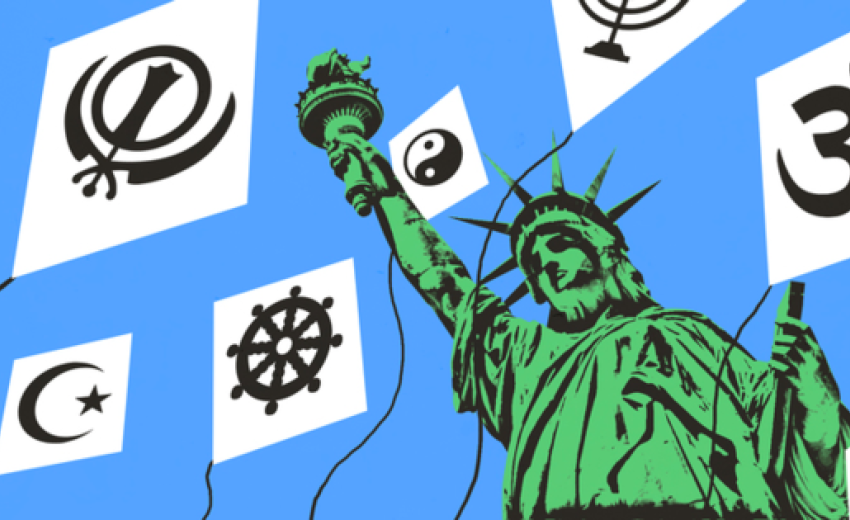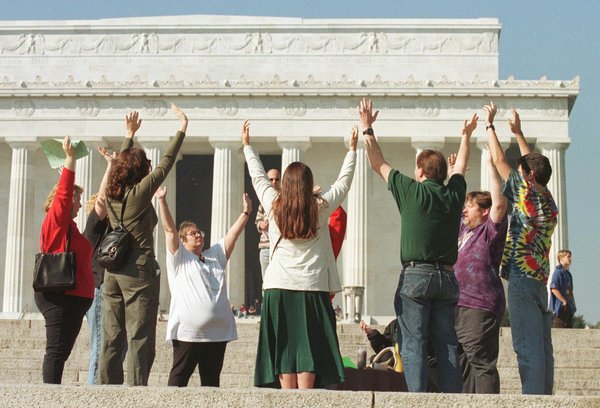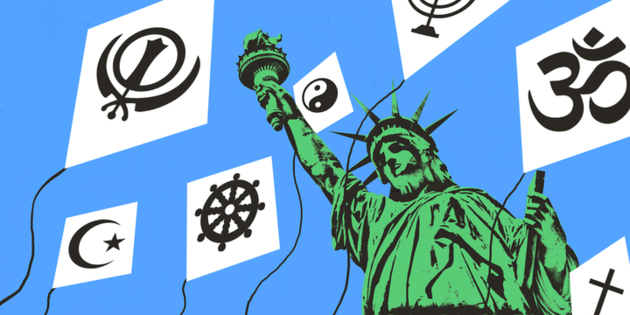
Nearly a century after German philosopher Friedrich Nietzsche first proclaimed “God is dead,” TIME magazine released a controversial cover on its April 8, 1966 edition with the related provocative question: “Is God dead?”
Both Nietzsche and TIME were exploring the prominence of God in people’s lives, and whether religiosity was on the decline in the society. Fifty years later, religion experts are still grappling with that question, though the context has drastically changed.

By many measures, religious practice and affiliation has greatly declined in the United States in the last 50 years. And yet spirituality, religion’s free-spirited sibling, appears to be as strong — if not stronger — than ever.
Here’s a look at some of the ways religious practice and belief have changed in the U.S. the last 50 years, and the trends that may continue to evolve:

-
-

-
-
A new “religious” group has emerged.
-
Spirituality has taken center stage.
-
The importance of religion in Americans’ lives has shifted.
-
Church attendance has declined.
-
More women are entering the clergy.
-
The religious right got organized.
-
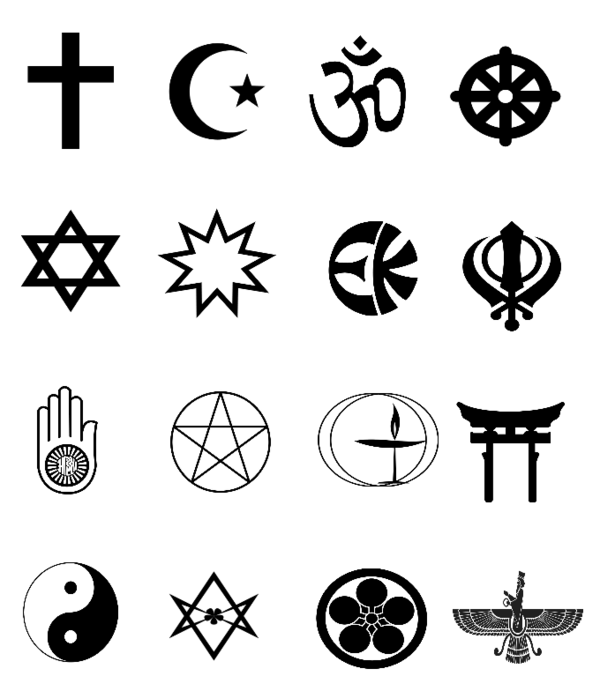
-
Non-Christian faiths have grown.
-
Islamophobia has risen sharply.
-
Advocacy agencies were established for frequently targeted religious groups.
 The Council on American-Islamic Relations, or CAIR, was founded in 1994 as an “organization that challenges stereotypes of Islam and Muslims.” The Sikh Coalition was formed in the aftermath of the terrorist attacks of September 11, 2001 and ensuing violence toward the country’s Sikh population. The Hindu American Foundation, an advocacy organization for the Hindu American community, was founded in 2003. Lady Liberty League, an organization that fights for religious freedom for Wiccans, pagans, and other nature religion practitioners, formed in 1985. And the list goes on.
The Council on American-Islamic Relations, or CAIR, was founded in 1994 as an “organization that challenges stereotypes of Islam and Muslims.” The Sikh Coalition was formed in the aftermath of the terrorist attacks of September 11, 2001 and ensuing violence toward the country’s Sikh population. The Hindu American Foundation, an advocacy organization for the Hindu American community, was founded in 2003. Lady Liberty League, an organization that fights for religious freedom for Wiccans, pagans, and other nature religion practitioners, formed in 1985. And the list goes on.
 Anti-Muslim sentiment is not a new phenomenon in the United States. For the first half of the 20th century American courts frequently denied citizenship to Muslims and those perceived to be Muslim, according to legal scholar Khaled A Beydoun.
Anti-Muslim sentiment is not a new phenomenon in the United States. For the first half of the 20th century American courts frequently denied citizenship to Muslims and those perceived to be Muslim, according to legal scholar Khaled A Beydoun.
But many feel that Islamophobia has risen in recent decades, especially in the aftermath of the Sept. 11 attacks. In the last few years anti-Muslim aggression has taken a disturbing turn, with new incidents being reported weekly. -
 Islam, Hinduism and a number of other non-Christian faiths have risen in the U.S. in recent years. This change in the face of American religion might be partially a result of the Immigration and Naturalization Act of 1965, which led to an influx of immigrants from India and other countries with large Hindu and Muslim populations. Pew Research predicts that by 2050, Muslims will surpass Jews as the second largest organized religious group after Christians. Hindus are also projected to rise from 0.7 percent of the U.S. population to 1.2 percent in 2050. Members of “other religions” (a category that includes Sikhs, Wiccans and Unitarian Universalists) are also expected to continue growing.
Islam, Hinduism and a number of other non-Christian faiths have risen in the U.S. in recent years. This change in the face of American religion might be partially a result of the Immigration and Naturalization Act of 1965, which led to an influx of immigrants from India and other countries with large Hindu and Muslim populations. Pew Research predicts that by 2050, Muslims will surpass Jews as the second largest organized religious group after Christians. Hindus are also projected to rise from 0.7 percent of the U.S. population to 1.2 percent in 2050. Members of “other religions” (a category that includes Sikhs, Wiccans and Unitarian Universalists) are also expected to continue growing. -
-
-
The New Atheists became a religion unto themselves.
-
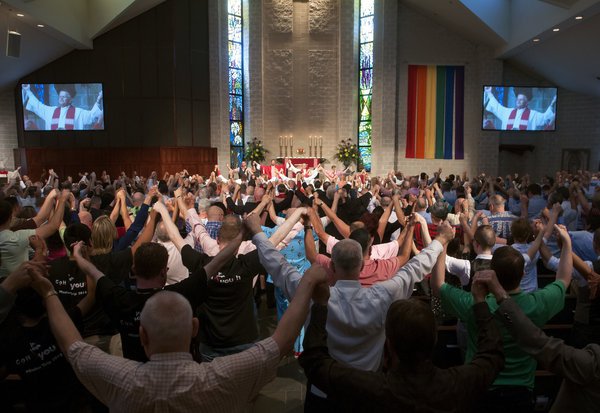
-
Americans aren’t necessarily sticking with the religion in which they were raised.
-
Spirituality found a home online.
 With the advent of computers, mobile apps and the Internet, faith has gone increasingly high-tech. To access spiritual teachings and communities we need look no further than our cell phones. Pew Research found in a 2014 survey that some 20 percent of Americans shared their faith online in a given week. Sixty-one percent of millennials reported seeing others share their faith online. From Instagram accountsto podcasts to YouTube channels, there are more ways than ever to find and share spirituality.
With the advent of computers, mobile apps and the Internet, faith has gone increasingly high-tech. To access spiritual teachings and communities we need look no further than our cell phones. Pew Research found in a 2014 survey that some 20 percent of Americans shared their faith online in a given week. Sixty-one percent of millennials reported seeing others share their faith online. From Instagram accountsto podcasts to YouTube channels, there are more ways than ever to find and share spirituality.
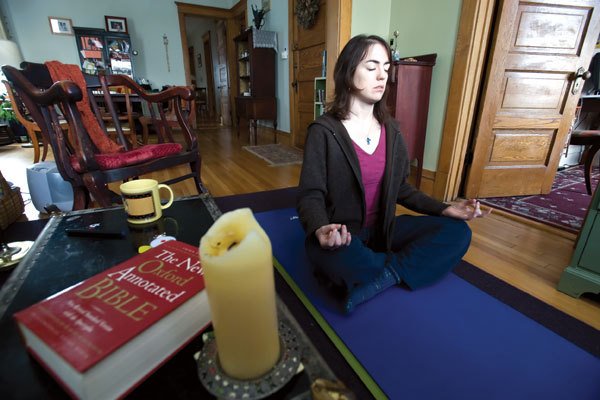 Pew Research found in 2014 that between 34-42 percent of American adults currently have a religious identity different from the one in which they were raised. (The number depends on whether Protestantism is treated as a single religious group or as three different traditions — evangelical Protestantism, mainline Protestantism and historically black Protestantism.) Eighteen percent of Americans who were raised in a religion are now unaffiliated, compared with just 4 percent who have moved in the other direction.
Pew Research found in 2014 that between 34-42 percent of American adults currently have a religious identity different from the one in which they were raised. (The number depends on whether Protestantism is treated as a single religious group or as three different traditions — evangelical Protestantism, mainline Protestantism and historically black Protestantism.) Eighteen percent of Americans who were raised in a religion are now unaffiliated, compared with just 4 percent who have moved in the other direction. -
-
Although famous 20th century occultists Aleister Crowley and Gerald Gardner had already died by 1966, the U.S. goddess movement was still yet to fully blossom. In the decades that followed, American pagan authors Starhawk and Margot Adlerboth published seminal works on the nature religion; priestess Selena Fox started Circle Sanctuary; the Covenant of the Goddess was founded; many different traditions were established; and the first pagan seminary opened its doors.At the heart of American faith’s evolution is what religion journalist Krista Tippettcalls a “proliferation of ways to engage spiritual practice.” Yes, you’ll still find Bibles in hotel rooms, but you’ll also see yoga and meditation rooms in some airports andMuslim prayer spaces on many college campuses. What it means to be spiritual — and how that looks in practice — is rapidly changing and diversifying. But rather than diminishing Americans’ faith, this transformation is also crystallizing certain core values, like service, community and connection to something greater than ourselves.
 Non-believers have always been part of the American demographic, but atheists and humanists have perhaps never been as organized, prominent and vocal as they are today. Though many of the largest organizations, like American Atheists, American Humanist Association, and Freedom from Religion Foundation, were established decades ago, the New Atheists emerged in the 2000s with a righteous, anti-religious fervor. Spearheaded by prominent British atheists Richard Dawkins and Christopher Hitchens, as well as American atheist Sam Harris, the New Atheists have gained a large following eager to read their books, watch their debates and attend their conventions.In 1960 there were just a handful of churches that might be described as “megachurches,” those with a charismatic senior minister, an active social outreach ministry and at least 2,000 people attending every weekend. As of 2012, there were roughly 1,600 megachurches in the U.S.
Non-believers have always been part of the American demographic, but atheists and humanists have perhaps never been as organized, prominent and vocal as they are today. Though many of the largest organizations, like American Atheists, American Humanist Association, and Freedom from Religion Foundation, were established decades ago, the New Atheists emerged in the 2000s with a righteous, anti-religious fervor. Spearheaded by prominent British atheists Richard Dawkins and Christopher Hitchens, as well as American atheist Sam Harris, the New Atheists have gained a large following eager to read their books, watch their debates and attend their conventions.In 1960 there were just a handful of churches that might be described as “megachurches,” those with a charismatic senior minister, an active social outreach ministry and at least 2,000 people attending every weekend. As of 2012, there were roughly 1,600 megachurches in the U.S.
 From spiritual gurus, to self-help books, to wellness retreats, the market for spirituality in the U.S. has perhaps never been so robust. The self-help industry, which often include alternative modes of spirituality along with motivational books and life coaching, brings in $13 billion a year in the form of books, retreats, classes and more. In the last 50 years, modern spiritual gurus like Deepak Chopra, Dr. Andrew Weil, Ram Dass, Eckhart Tolle, Oprah Winfrey, Byron Katie, Marianne Williamson and countless others emerged with a new prescription for well-being. Yoga became a $27 billion industry with more than 20 million practitioners in the U.S. Meditation and mindfulness were quick to follow, gaining fans among major companies like Google, General Mills, Aetna and Goldman Sachs.
From spiritual gurus, to self-help books, to wellness retreats, the market for spirituality in the U.S. has perhaps never been so robust. The self-help industry, which often include alternative modes of spirituality along with motivational books and life coaching, brings in $13 billion a year in the form of books, retreats, classes and more. In the last 50 years, modern spiritual gurus like Deepak Chopra, Dr. Andrew Weil, Ram Dass, Eckhart Tolle, Oprah Winfrey, Byron Katie, Marianne Williamson and countless others emerged with a new prescription for well-being. Yoga became a $27 billion industry with more than 20 million practitioners in the U.S. Meditation and mindfulness were quick to follow, gaining fans among major companies like Google, General Mills, Aetna and Goldman Sachs. -
 Contrary to popular belief, it was segregation — and not abortion — that mobilized the religious right in the 1960s and ‘70s. In a series of court cases, Paul Weyrich, a religious conservative political activist, worked to organize evangelicals around segregation as an issue of “religious freedom.” A 1971 ruling in Green v. Connally upheld that racially discriminatory private schools could not receive tax exemption “for charitable, educational institutions, and persons making gifts to such schools.” Weyrich and others tried to fight this by saying that because private schools received no federal funding, the government couldn’t tell them how to operate (ie. they could continue discriminating against African American applicants.) Sound familiar?
Contrary to popular belief, it was segregation — and not abortion — that mobilized the religious right in the 1960s and ‘70s. In a series of court cases, Paul Weyrich, a religious conservative political activist, worked to organize evangelicals around segregation as an issue of “religious freedom.” A 1971 ruling in Green v. Connally upheld that racially discriminatory private schools could not receive tax exemption “for charitable, educational institutions, and persons making gifts to such schools.” Weyrich and others tried to fight this by saying that because private schools received no federal funding, the government couldn’t tell them how to operate (ie. they could continue discriminating against African American applicants.) Sound familiar?
Prior to the 1970s, the relationship between evangelical Christians and the Republican party was negligible. In 2016, it’s hard to imagine a Republican party without its evangelical voting bloc.In 1965, the Catholic Church took a huge step for interfaith relations by publishing a document that acknowledged the divine origin of all human beings. In the decades after, interfaith engagement exploded in the United States, with the founding of countless organizations and conferences dedicated to multi-faith dialogue. The Council for a Parliament of the World’s Religions formed in 1988 in the spirit of the first interfaith convention that occurred a century earlier, and groups like Interfaith Power & Light and Interfaith Youth Core emerged to usher in a new millennium of interfaith work.
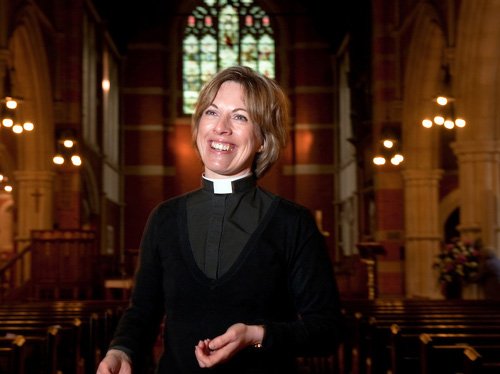 In many Christian and Jewish congregations, the number of clergywomen has greatly increased. According to data from the Association of Theological Schools, women today make up about a third of all seminary students. Thirty years ago, women made up less than a fifth of seminary students. This is due in large part to the fact that it wasn’t until after World War II that many of the larger and more prominent denominations started allowing women’s ordination. The United Methodist Church and what would later become the Presbyterian Church USA ordained their first women ministers in 1965. The Evangelical Lutheran Church in America, Reform Judaism, and the Episcopal Church followed their lead in the early 1970s.
In many Christian and Jewish congregations, the number of clergywomen has greatly increased. According to data from the Association of Theological Schools, women today make up about a third of all seminary students. Thirty years ago, women made up less than a fifth of seminary students. This is due in large part to the fact that it wasn’t until after World War II that many of the larger and more prominent denominations started allowing women’s ordination. The United Methodist Church and what would later become the Presbyterian Church USA ordained their first women ministers in 1965. The Evangelical Lutheran Church in America, Reform Judaism, and the Episcopal Church followed their lead in the early 1970s. -
 In a 1937 Gallup Poll, 73 percent of Americans said they were church members. That percentage fell to around 70 percent in the ‘60s and ‘70s. By the 2000s, that number hovered around 60 percent.
In a 1937 Gallup Poll, 73 percent of Americans said they were church members. That percentage fell to around 70 percent in the ‘60s and ‘70s. By the 2000s, that number hovered around 60 percent. -
 In 2007, 56 percent of Americans said religion was very important in their lives. Measures of this question from the 1950s and 1960s showed that at that time, over 70 percent of Americans said religion was very important in their daily lives.
In 2007, 56 percent of Americans said religion was very important in their lives. Measures of this question from the 1950s and 1960s showed that at that time, over 70 percent of Americans said religion was very important in their daily lives. -
 The term “spiritual but not religious” has emerged in recent years to describe how more and more Americans identify. Yes, religious affiliation has declined. But feelings of spiritual peace and well being? Wonder about the universe? Both have significantly increased in the last decade across religious and nonreligious groups. Even among the unaffiliated and those who say religion isn’t particularly important to them, spiritual sentiment is strong and growing. And more than half of atheists say they regularly feel a sense of awe and wonder. Between 2007 and 2014, the percentage of atheists who said they felt a deep sense of wonder about the universe on a weekly basis rose a full 17 points from 37 percent to 54 percent.
The term “spiritual but not religious” has emerged in recent years to describe how more and more Americans identify. Yes, religious affiliation has declined. But feelings of spiritual peace and well being? Wonder about the universe? Both have significantly increased in the last decade across religious and nonreligious groups. Even among the unaffiliated and those who say religion isn’t particularly important to them, spiritual sentiment is strong and growing. And more than half of atheists say they regularly feel a sense of awe and wonder. Between 2007 and 2014, the percentage of atheists who said they felt a deep sense of wonder about the universe on a weekly basis rose a full 17 points from 37 percent to 54 percent. -
 Nearly one in three Americans under 35 today are religiously unaffiliated, meaning they do not identify with any formal religious group. As a whole, these “nones” comprise the second largest religious group in the U.S. behind evangelical Protestants.
Nearly one in three Americans under 35 today are religiously unaffiliated, meaning they do not identify with any formal religious group. As a whole, these “nones” comprise the second largest religious group in the U.S. behind evangelical Protestants. -
-
In 1948, Gallup found that about 91 percent of Americans identified as Christian. That number took a big dip in subsequent decades and continues to decline in recent years. From 2007 to 2014 alone, the percentage of Americans who identified as Christian fell from 78.4 percent to 70.6 percent. -
In 1966, some 98 percent of Americans said they believed in God, according to a Gallup survey. When Gallup and Pew Research surveyed Americans in 2014, the number had dropped to 86 percent and 89 percent respectively. Among the youngest adults surveyed by Pew, those born between 1990 and 1996, the share of believers was just 80 percent.Some researchers argue that the number has decreased simply because Americans are more comfortable now than they were in the 60s admitting that they don’t believe in God.

